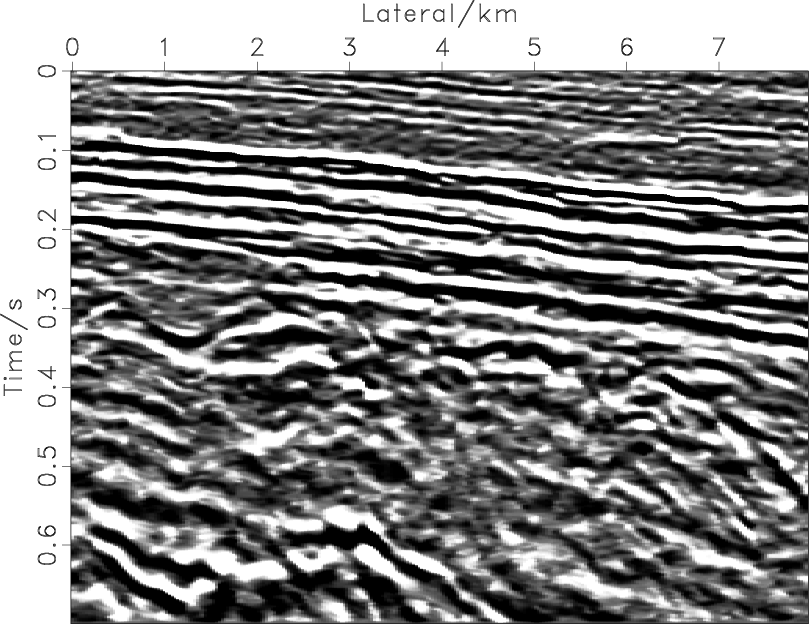A new paper is added to the collection of reproducible documents:
Seismic dip estimation based on the two-dimensional Hilbert transform and its application in random noise attenuation


In seismic data processing, random noise seriously affects the seismic data quality and subsequently the interpretation. This study aims to increase the signal-to-noise ratio by suppressing random noise and improve the accuracy of seismic data interpretation without losing useful information. Hence, we propose a structure-oriented polynomial fitting filter. At the core of structure-oriented filtering is the characterization of the structural trend and the realization of nonstationary filtering. First, we analyze the relation of the frequency response between two-dimensional (2D) derivatives and the 2D Hilbert transform (Riesz transform). Then, we derive the noniterative seismic local dip operator using the 2D Hilbert transform to obtain the structural trend. Second, we select polynomial fitting as the nonstationary filtering method and expand the application range of the nonstationary polynomial fitting. Finally, we apply variableamplitude polynomial fitting along the direction of the dip to improve the adaptive structureoriented filtering. Model and field seismic data show that the proposed method suppresses the seismic noise while protecting structural information.
codemore code
~~~~